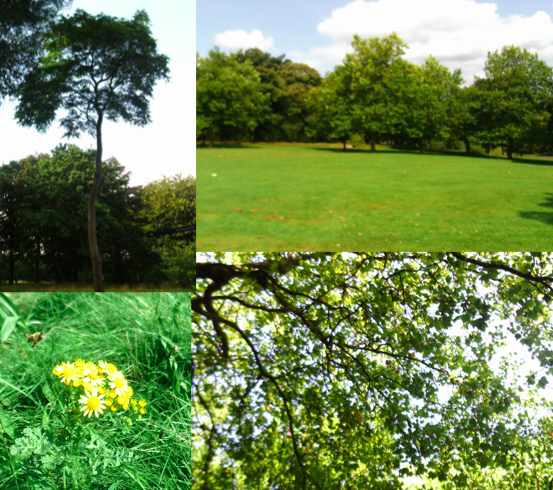
Throughout my degree in marine biology, we were always encouraged to attend as many career and interest-related events as possible. One of my passions is climate change mitigation. Therefore, when I saw that Zero Carbon Liverpool (ZCL) had managed to secure a few fully funded places to the ‘Zero Carbon Britain: Making it happen’ short course at the Centre for Alternative Technology (CAT), I had to do some research. CAT was founded in 1973 by businessman turned environmental activist Gerard Morgan-Grenville in an abandoned slate quarry site near Machynlleth, Wales. Originally established as a small community experimenting with alternative methods of construction and food production, CAT is now an award-winning facility that promotes low-energy technologies and sustainable living.
I remember thinking to myself ‘what better place to learn about the clean energy revolution than in a hippy-ville turned research institute!’ I was so excited by the prospect of visiting CAT, I immediately applied for one of the funded spots on the course. A few days later, I found out that I would be off to visit the beautiful region of Mid-Wales, to engage with CAT’s vision of a modern, zero-emission society.
Centre for Alternative Technology

I managed to get a lift to CAT from Jo (one of the co-founders of ZCL) and her fiancé Adam. We were also joined by Lindsay, a fellow zero carbon enthusiast. We set off from Liverpool on an overcast afternoon and reached our destination a little over two hours later. Upon arriving at CAT we were soon surrounded by lush greenery, which had recolonized the disused quarry. The novice terrestrial naturalist within me instinctively started looking out for various flowering plants in bloom and instantly regretted not bringing my vegetation ID guide.
We arrived slightly before tea time, so Lindsay and I decided to wander around and check out the facilities on site. I found out that we would be staying in the Wales Institute for Sustainable Education (WISE) building for the entire duration of the course and that our course activities would also be based in and around WISE. The building has numerous environmentally friendly additions, for example the adoption of the rammed earth technology, a construction technique that uses natural aggregates such as clay, gravel, sand and silt; as well as incorporating reed beds for waste water treatment. We also found, scattered on the CAT trail, various environmentally friendly innovations all of which were labeled explaining why and how they were more sustainable then other, more common, alternatives. One can easily spend hours on the trail but the dinner bell rang and we headed back to the CAT café to enjoy a delicious vegetarian curry. Afterwards, we went to the bar for a couple of drinks. Coincidentally, a local folk group were having their weekly practice, which provided us with some much-appreciated musical entertainment.

Zero Carbon Britain: Rethinking the future


The next day was the start of the ZCB course which focused on the possibility of an alternative future. We were introduced to the many contributing factors to climate change. These include but are not limited to industrialization, population growth, capitalism and diet. As of June 2017, the atmospheric carbon dioxide (CO2) level has reached 408.84 parts per million (ppm) (Mauna Loa Observatory), well over the pre-industrial 280 ppm in the mid-1700s. This unprecedented amount of CO2 is much more than can be absorbed by natural processes. The excess CO2 traps more heat in the atmosphere, which leads to global warming and a cascade of negative effects, such as regional flooding and droughts. If the world’s population continues its dependence on fossil fuels to support our ‘modern’ lifestyle, these negative effects will continue to accelerate. These are the reasons that climate change is often deemed as the biggest humanitarian crisis of our generation. Even though world leaders are aware of how pressing the matter is, this is a battle against time. Knowing this, I couldn’t help but feel deflated about the future of our climate.

However, my pessimism was quickly dissipated by Alice Hooker-Stroud, the former ZCB research coordinator, when she explained that CAT’s research has shown that current technology is sufficient for the UK to achieve a net zero greenhouse gas emission now, without having to wait for the ‘silver bullet’ of future technologies or potentially dangerous nuclear power. She reiterated that we need to: 1) ‘power up’ renewable energy, with a concentration on wind power; and 2) ‘power down’ our current energy demand, by improving home heating efficiency, supporting the electrification of vehicles less air travel. This all sounds very familiar but I was both doubtful and curious as to whether we could ‘keep the lights on’ – even when there’s no wind and the sun isn’t shining.


The answer, apparently, is a resounding ‘yes’ – CAT’s modelling has shown that a ZCB future would produce a surplus of energy 82% of the time – by using ‘smart’ appliances, storing excess electricity and using carbon neutral synthetic fuels, any shortfall could be overcome. Last but not least, through diet changes (mainly by reducing meat consumption), 75% of the land currently used for grazing livestock can be repurposed to grow more biomass required to support the ZCB energy system; or be restored back to forest or peatlands to capture carbon.
Zero Carbon Britain: Making it happen
The Paris Climate Agreement states that globally we must reach net zero greenhouse gas emissions by 2050, therefore there really is no option but to embrace the zero-carbon future. We spent the second day exploring the big question – What’s stopping us?
Researchers have shown that we are not limited by technology but rather a combination of economic, cultural and psychological barriers. They believe that climate change in the modern world is not a root problem but a symptom of consumerism and a disconnection from nature and from other human beings. Changing how millions of people live is a unique challenge in itself and can only be overcome if actions are carried out at global, national, local and individual levels. There is no act too small and no act too bold. However, some things

that are beneficial include lobbying climate legislation, divestment from the fossil fuel industry, investing in zero carbon projects and community energy, challenging climate skepticism in the media, improving carbon literacy, promoting communications…the list goes on. There are countless solutions to this wicked problem but collective action is the key.
I left CAT with a new-found sense of optimism for our zero-emission future. It is often easy to assume that others care less about climate change (amongst other things) than you do. This blog is my contribution to spreading climate positivity. What will yours be?
I would like to thank Zero Carbon Liverpool for giving me this invaluable experience. If you would like to get involved with Zero Carbon Liverpool’s work locally, get in touch with them on Twitter and Facebook.
The Zero Carbon Britain reports can be accessed here.
Post by: Fiona Chong
Save
 The
The  In another, more recent study, similar findings were observed in college students who took part in a competitive task. Participants were randomly assigned to consume either a glucose beverage or placebo drink containing a sugar substitute. Following this, participants then competed against an opponent in a reaction time task, which has been shown previously to provide a
In another, more recent study, similar findings were observed in college students who took part in a competitive task. Participants were randomly assigned to consume either a glucose beverage or placebo drink containing a sugar substitute. Following this, participants then competed against an opponent in a reaction time task, which has been shown previously to provide a  While these studies do not necessarily ascertain causality, the relationship between low blood glucose and the tendency to become aggressive makes biological sense, since glucose is the main energy source our brains need to control such negative impulses. As observed in studies and experienced by many of us, ‘hangry’-related crimes can also be easily avoided by supplying the potential offender with food, further supporting the role of glucose in hunger-related anger. So next time ‘hangriness’ threatens to ruin the harmony in your household, fill your mouth with food rather than foul language, and save yourself a night banished to the couch.
While these studies do not necessarily ascertain causality, the relationship between low blood glucose and the tendency to become aggressive makes biological sense, since glucose is the main energy source our brains need to control such negative impulses. As observed in studies and experienced by many of us, ‘hangry’-related crimes can also be easily avoided by supplying the potential offender with food, further supporting the role of glucose in hunger-related anger. So next time ‘hangriness’ threatens to ruin the harmony in your household, fill your mouth with food rather than foul language, and save yourself a night banished to the couch.
 Whilst sometimes trivialised,
Whilst sometimes trivialised, 


